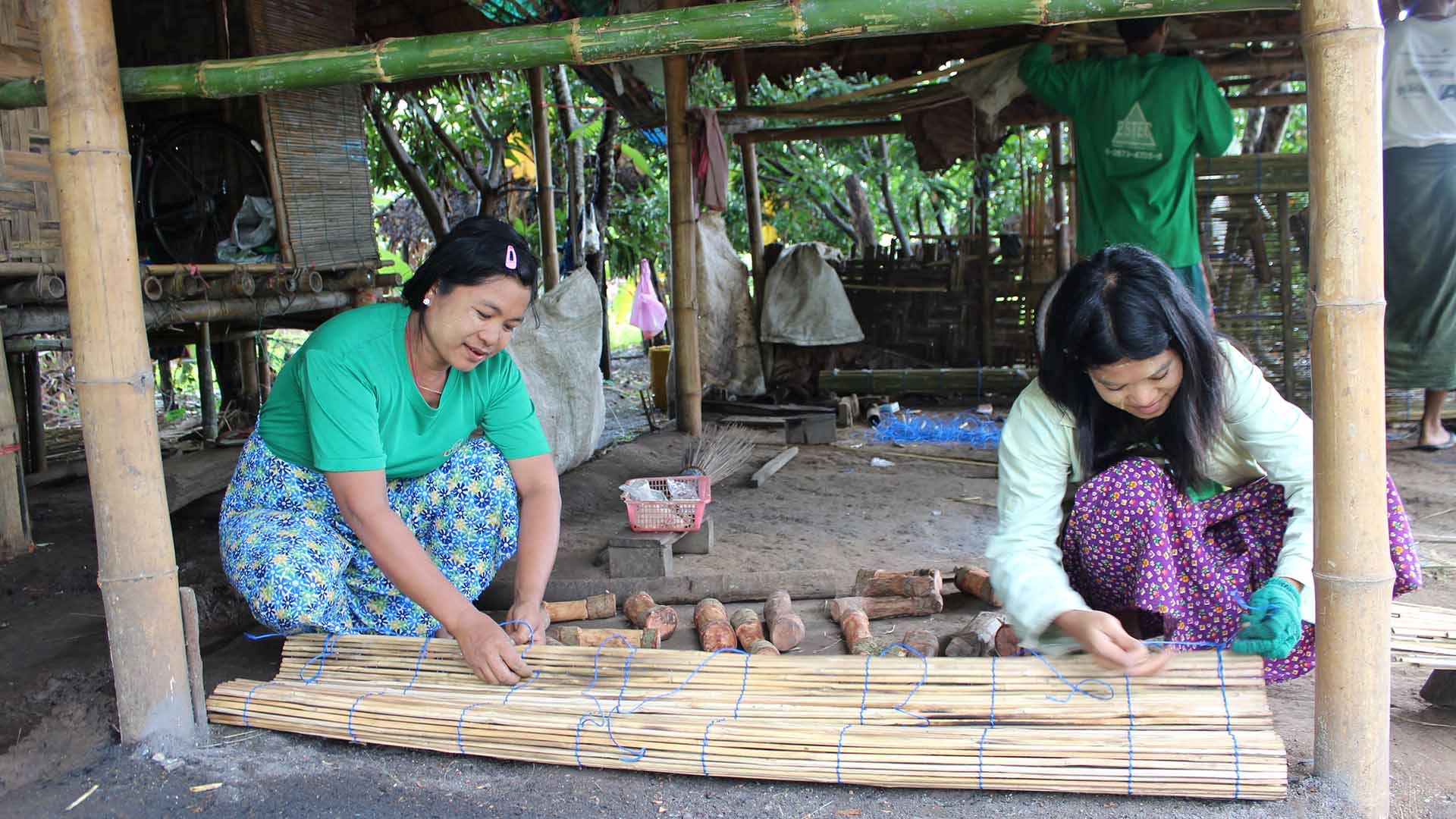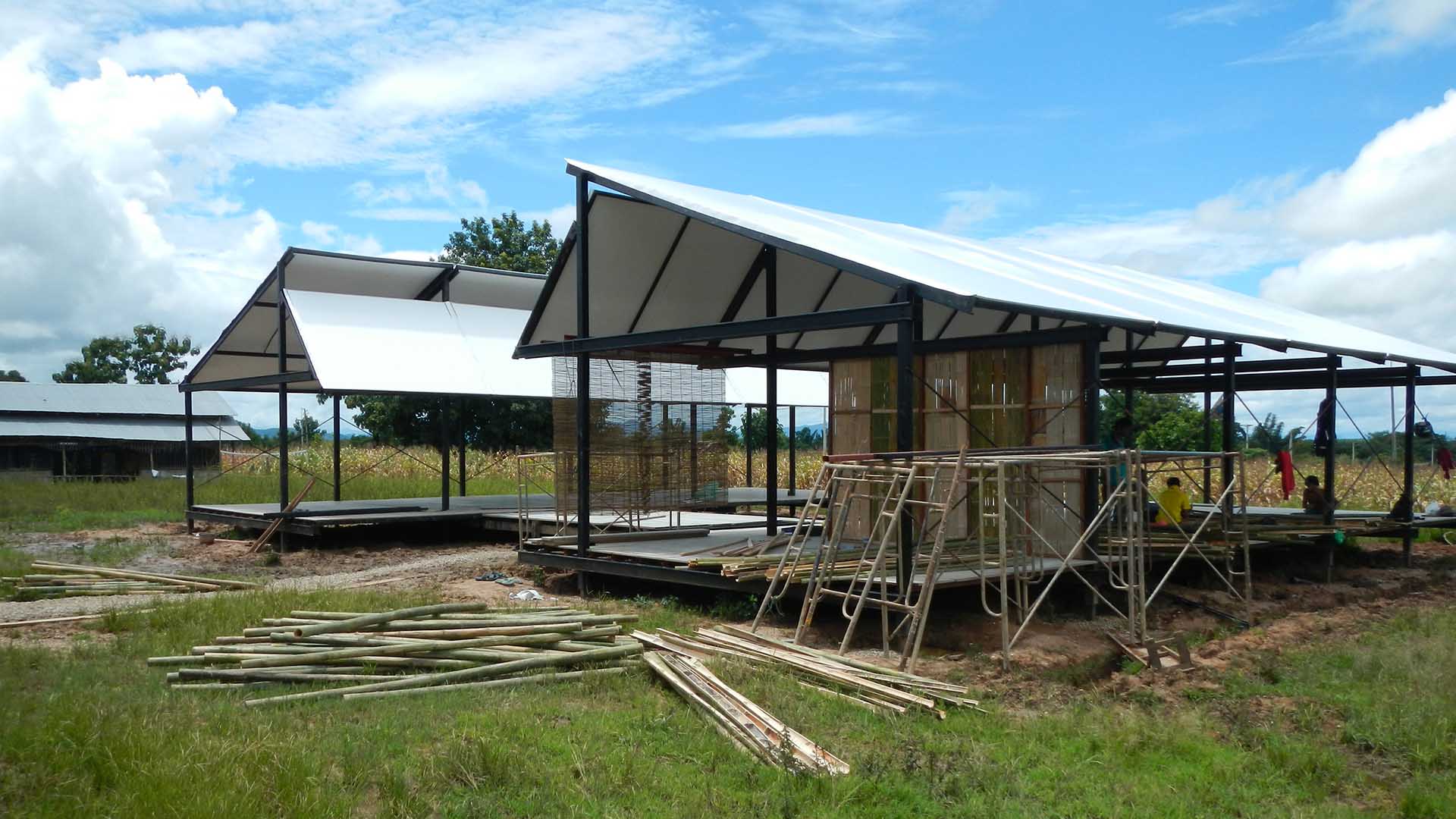Mobile Shelters and Mass Migration
How portable structures can offer protection to displaced communities
In March 2013, a wild mob of hundreds set fire to an Islamic school in Meiktila, a town in the Mandalay region of central Myanmar. Armed with machetes and metal pipes, they killed 32 students and four teachers, clubbing some to death and burning others alive. The next month, mortar shells rained down on another school in Tangyan, a small town in Myanmar’s eastern Shan state.
Arson attacks, aerial bombings, and shelling became a customary part of religious and ethnic conflicts across the country and the violence continued for years. By September 2017, a school in Mee Chaung, a village in Rakhine state, was totally destroyed by a bomb.
The Rohingya crisis was underway. Around 720,000 Rohingya, mostly women and children, were forced to flee to Bangladesh after a crackdown on the minority Muslim community began in August 2017. Their plight, a precarious existence without fixed accommodation, healthcare, or education, is one that echoes around the world. Syrians and Sudanese have fled civil war. According to the UN Refugee Agency, more than 68 million people have been forcibly displaced from their homes and are currently in a similar situation. It is an issue that architects and designers are increasingly looking to address.
Small-scale solutions for large-scale problems
One of those solutions is Building Trust International’s Moving Schools project, which provides a modular, flat-pack design for migrant and refugee communities living in Mae Sot, on the border of Myanmar and Thailand.
“I was drawn to the idea that architecture could be more than a service for wealthy individuals and public services,” says David Cole, director of the UK-based non-profit organization. Under the motto of “solving a world of issues through design”, Cole sought to provide stability in an age of mass transience. The disruption to children’s education is a notable byproduct.

Californian architects Amadeo Bennetta and Dan LaRossa produced a mobile, relocatable design of a school that takes three months to construct. The idea is for these portable buildings to provide security for displaced people where they often don’t have the right to own land – and therefore, aren’t able to invest in their own infrastructure.
The shelters, which have a skeletal steel frame, are based on a modular building system that allows them to be constructed according to the site’s conditions. Internal walls can be adjusted as required. A UV-resistant tensile fabric for the roof, meanwhile, dramatically reduces overheating caused by the sun, whose heat regularly exceeds 40º C in the dry season, and noise made by rain, a serious consideration during the monsoon season. Another aspect is that the assembly drawings for the school are open source, allowing anyone to freely download the project — to potentially create their own, better version.
The initiative has so far catered to more than 1,000 children, transforming schools from extremely basic tarpaulin sheets covering mud floors into clean and well-ventilated classrooms that guard against flooding and maximize natural light.
“There is no doubt that current generations are more transient than those of the past, the more flexible our buildings are to respond to changing needs the more we reduce waste,” adds Cole.

The Moving School is one of a number of examples of designs that are innovative in their approaches to portable structures and emergency relief. Sweden’s IKEA Foundation produced a shed-like structure that takes just 4 hours to construct. Jordanian architects Sarah Abdul Majid and Sandra Hiari created an easy-to-assemble set of street furniture called Playscapes to bring playgrounds to cities and refugee camps. French architect Stephanie Chaltiel has used drones to coat a shelter in clay, a rapid construction method that could be used in disaster zones. American designer Anna Meddaugh designed a personal urinal that women in refugee camps can use in shelters at night to avoid the threat of sexual assault outside.
Aspirations over practicality
Due to the emergency nature of certain situations, however, errors can be made in terms of understanding how long a project needs to last and what role it must serve. “It is very important to clarify the difference between modulate constructions, temporary constructions, mobile constructions and portability constructions because they are independent concepts,” says Verónica Sánchez Carrera, an expert in refugee camps and informal settlements.
Equally, there are questions as to why architects are not more proactive in tackling society’s ills, rather than merely reacting to disaster. “When we talk about architecture, we shouldn’t just focus on design solutions, but also more on the underlying structural issues,” says Rene Boer, an architecture critic and researcher based in Amsterdam.

Detention centers, refugee camps, and borders themselves are the creation of architects, says Boer, and the profession must acknowledge this — especially if it’s the case of architects coming from Europe to work in developing countries. Kunlé Adeyemi’s Makoko Floating School, which collapsed just a week after winning the Silver Lion at the 2016 Venice Biennale, is an example of “aspiration over practicality”, he adds.
Nonetheless, once taking into account the complex blend of factors involved in disaster relief, humanitarian aid, the refugee crisis, and the global south, portable projects and modular buildings could have a transformative role to play. They have the potential to help the world’s most imperiled communities – if done the right way.
“Good design is rather meaningless in a vacuum,” says Marie Aquilino, a post-disaster reconstruction specialist. “Architects must work with local expertise and knowledge to help communities commit to what they care about. But people facing the tremendous stress of constant displacement and uncertainty can only benefit from the concept of a mobile building.”
MAIN IMAGE: Moving School in Mae Sot, Thailand. Photo courtesy of Building Trust International
